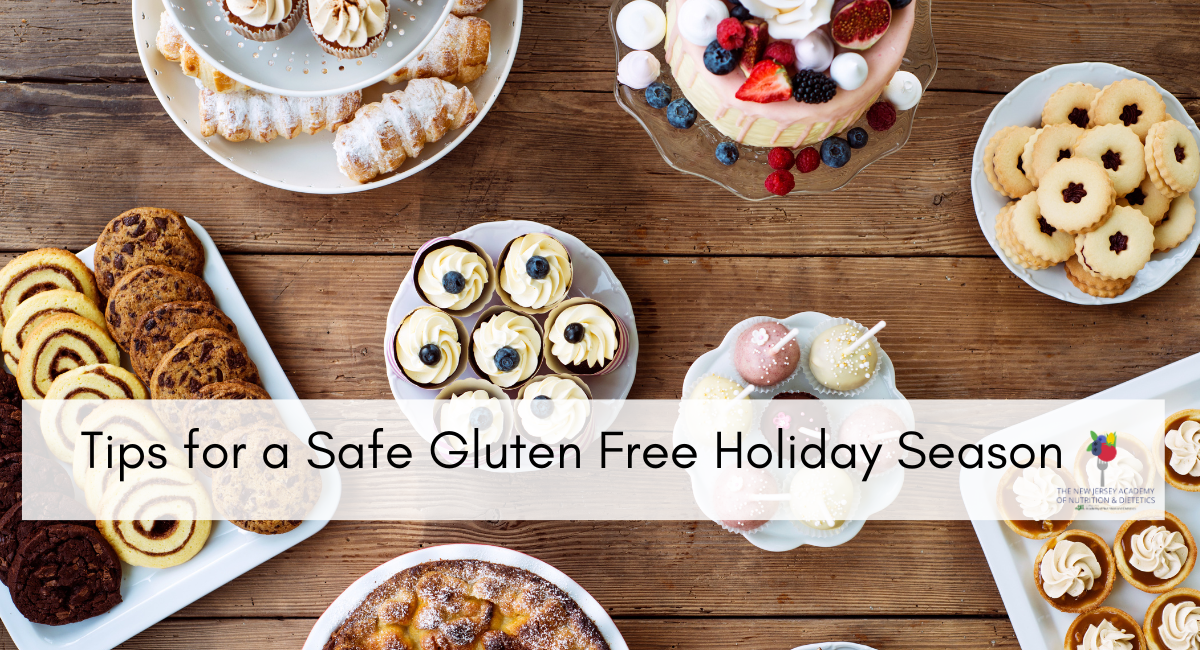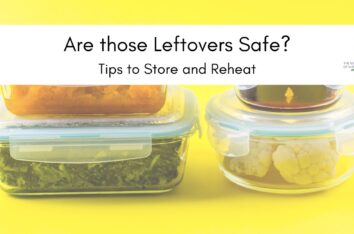There are so many things to look forward to this time of year: holiday movie marathons,
winter sports, spending time with loved ones and other festivities. It is essentially a season of
celebration. And with each celebration, there are also so many foods we look forward to—
maybe foods we only get to have once a year. So, imagine the devastation you may feel if you
were told you could no longer enjoy your favorite holiday dish. For people living with celiac
disease or other medically necessary dietary restrictions, this disappointment is unfortunately
all too common. In fact, foods easily become the centerpiece at the table (no pun intended)
and mealtimes may be more stressful than they are pleasurable.

I’ll never forget my first holiday season after starting a gluten free diet 11 years ago. We
always spent Thanksgiving at my aunt and uncle’s house in Livingston, where our family had a
few “food traditions” of our own. My Uncle Guy always makes sliders, which would normally
be a “safe” option for someone with celiac disease, minus the roll; however, these were not
your typical beef patties but a top-secret recipe he’d developed, prepared, and served for
years. He initially said no when I’d asked if there was anything that could possibly contain
gluten inside the patties but, wanting to be sure, I asked more specific questions about the
ingredients. He admitted that he put “a little” soy sauce into them and when I explained that
soy sauce was not gluten free, he exclaimed, “It’s only a little gluten!…It’s gluten free!” The
moral of the story: always ALWAYS check and double check ingredients.
Navigating any type of dietary restriction is definitely a learning curve so here are some
dietitian-approved tips for keeping yourself or gluten-free loved ones safe during the holidays:
Dietitian Approved Glute Free Swaps for the Holidays
Gluten is the protein found in wheat, barley, rye, and malt; it is commonly found in
things like bread, pasta, baked goods, sauces/marinades, salad dressings, and
certain grains.
1. Swap and substitute ingredients
- Swap regular flour for one-to-one gluten free flour. Nowadays, there are so many gluten free baking alternatives.
- For charcuterie boards or dips, consider using only gluten-free dippers such as rice crackers or fresh vegetables.
- Swap croutons in a salad for dried chickpeas or nuts
Bottom line, don’t be afraid to experiment with ingredients and adapt recipes to make them
gluten-free. When I had to transition to a gluten free diet, my grandma modified her
infamous chicken soup by removing the offending ingredient. No one else seemed
to mind (or notice) the change. It actually tasted better!
2. Have a plan and communicate your needs ahead of time
- Talk to the host in advance to see what he/she plans on serving to get an idea of what options will be available for you. Maybe he/she would be willing to modify a recipe that normally contains gluten or even leave the gluten-containing ingredient (for example: croutons, matzoh balls, bread) on the side rather than automatic all serving them within an otherwise gluten-free dish. This way, you can participate and eat the same meal and whoever wants to add croutons/matzoh balls/bread afterwards still has that option.
- If you’re the host find out if any of your guests have celiac disease. Don’t be afraid to ask what they can and cannot eat. You’re not expected to know the in’s and out’s of the gluten free diet, but being proactive and asking when you’re unsure of something can go a long way. I can guarantee, your guest will appreciate it.
3. Stay safe by serving yourself first to avoid any cross contact
- If your family typically serves things “buffet-style,” try to be first in line to get to the food. This way you can ensure there has not been any cross-contact between serving utensils.
- Alternatively, ask the host if you could set some food aside for yourself before it’s been offered to everyone else.
4. Be Patient and Advocate for Yourself
- Occasionally, you will encounter instances where your dietary needs are misunderstood and/or minimized; however, it is still important to advocate for yourself. To this day, my family still asks me if I can eat certain things like pretzels (not understanding that gluten does not just mean sliced bread) or if I can “just try a small bite,” of something. But I also have the same family members buying a separate gluten free dessert just for me. It’s a learning process for everyone.
5. Have a Backup Plan
- If all else fails, eat before and stick a snack in your bag or bring your own meal.
- Offer to bring a dish for everyone to enjoy. Here are some tasty gluten-free recipes that the whole family can enjoy!
In conclusion, the holidays present additional challenges for those with dietary restrictions. But this doesn’t have to be the case. With some advance planning, those with celiac disease can enjoy the
festivities, have the (gluten free) cake, and eat it too!
Gluten Free Holiday Recipe Links
Flourless Chocolate Candy Cane Cookies
Gluten Free Stuffed Acorn Squash
Blog written by Taylor Wallach, RD for New Jersey Academy of Nutrition & Dietetics



